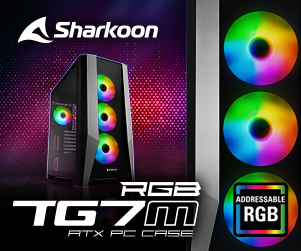Summary
The power consumption has been reduced to around 260 to 270 watts compared to the Nitro with a different BIOS, but the bottom line is that it’s not really any better when you compare it to the GeForce RTX 4070 (Super). But it has at least become a little less. If you really want to take a closer look at the card, you’ll have to “optimize” the default BIOS manually using trial and error in the Radeon software. It will certainly be possible to optimize something in this way, but this will vary greatly from card to card. However, you won’t notice the few FPS more or less anyway.
The too small Infinity Cache and the even lower memory bandwidth compared to the RX 7800XT negate all the advantages on paper in reality. That’s a real shame, but it’s certainly intentional in order to avoid AMD’s own cannibalization. However, if you were expecting to outperform the GeForce RTX 4070 Super, then you made a huge miscalculation. It would have needed a little more performance for that. It’s fine when plugged in, but the world of pixels simply turns too slowly.
The Sapphire Radeon RX 7900 GRE Pure 16 GB
Whether you have to pour such a high percentage of power into the card depends on your point of view and your ability to suffer with energy costs. The Sapphire Radeon RX 7900 GRE Pure 16GB cuts a really good figure from a technical point of view, because it can’t help the chip. It’s fair to separate the two at this point. Despite slight savings in the voltage converter phases, the board makes a very high-quality impression and the cooler and pads are really solid. In the end, there is almost nothing that speaks against the Sapphire Radeon RX 7900 GRE Pure 16GB, except perhaps its performance compared to the other cards. In terms of efficiency, NVIDIA is clearly ahead (not only) in this performance and price class, but we’ve just been over that. On the other hand, the card is very quiet, despite the 260 to 270 watts of waste heat.
The ray tracing performance has at least taken a big step forward and is now on a par with the larger Ampere cards. This must also be acknowledged, even if there are still up to double-digit lags in DXR performance. But the gap has narrowed. This also applies to things like the excellent video encoder. With RDNA3, AMD has completely turned telemetry on its head, which has worked well in most respects. The fact that you can finally read out a TBP that is reasonably accurate, even if it is only a good estimate, is a big step forward. NVIDIA has long relied on real monitoring of the rails by means of shunts, AMD now at least relies on the summation of all values from the DCR and some math, which also works. Sapphire doesn’t slip up here either.
Conclusion
A card that is only a maximum of 6 percent faster than a more economical Radeon RX 7800XT should ultimately only cost a little more than perhaps a 10% price premium, especially as AMD uses Salvage at its very best here. With a current street price of the Saphire RX 7800XT Pure of 556 Euro incl. VAT, this would be quite reasonable, even if the surcharge of over 90 Euro compared to an RX 7800XT Pulse is rather painful. Visually, however, there is nothing to complain about, which perhaps puts the price into perspective a little. Because it is a nice card, after all.
Sapphire Radeon RX 7900 GRE Pure, 16GB GDDR6, 2x HDMI, 2x DP, lite retail (11325-03-20G / 11325-03-21G)
 | Abhol-/Versandbereit in 1-3 Werktagen | 603,77 €*Stand: 17.05.24 14:18 |
 | Zentrallager: 3 Stück lagernd, Lieferung 1-3 WerktageFiliale Wilhelmshaven: 3 Stück lagerndStand: 17.05.24 14:21 | 605,52 €*Stand: 17.05.24 14:21 |
 | Lagernd | 605,53 €*Stand: 17.05.24 14:20 |
Sapphire Pulse Radeon RX 7900 GRE, 16GB GDDR6, 2x HDMI, 2x DP, lite retail (11325-04-20G / 11325-04-21G)
 | Zentrallager: 5 Stück lagernd, Lieferung 1-3 WerktageFiliale Wilhelmshaven: 5 Stück lagerndStand: 17.05.24 14:21 | 573,99 €*Stand: 17.05.24 14:21 |
 | lagernd, Lieferzeit 1-2 Werktage | 574,00 €*Stand: 04.05.24 14:23 |
 | Sofort lieferbar, Lieferzeit max. 1-3 Werktage | 579,95 €*Stand: 17.05.24 14:11 |
Sapphire Pulse Radeon RX 7900 GRE, 16GB GDDR6, 2x HDMI, 2x DP, lite retail (11325-04-20G / 11325-04-21G)
 | Zentrallager: 5 Stück lagernd, Lieferung 1-3 WerktageFiliale Wilhelmshaven: 5 Stück lagerndStand: 17.05.24 14:21 | 573,99 €*Stand: 17.05.24 14:21 |
 | lagernd, Lieferzeit 1-2 Werktage | 574,00 €*Stand: 04.05.24 14:23 |
 | Sofort lieferbar, Lieferzeit max. 1-3 Werktage | 579,95 €*Stand: 17.05.24 14:11 |
- 1 - Introduction, technical data and technology
- 2 - Test setup and methods
- 3 - Teardown: PCB and components
- 4 - Teardown: cooler and backplate
- 5 - Teardown: material analysis
- 6 - Gaming performance Full-HD (1920 x 1080)
- 7 - Gaming performance WQHD (2560 x 1440)
- 8 - Gaming performance Ultra-HD (3840 x 2160)
- 9 - Gaming performance DLSS / FSR (3840 x 2160)
- 10 - Power consumption, transients and PSU recommendation
- 11 - Tmepratures, clock rates and infrared
- 12 - fan speed, noise and audio-sample
- 13 - Summary and conclusion




































60 Antworten
Kommentar
Lade neue Kommentare
Veteran
1
Urgestein
Mitglied
Urgestein
Urgestein
Urgestein
Urgestein
Urgestein
Urgestein
Urgestein
Urgestein
Urgestein
Urgestein
Urgestein
Urgestein
1
Urgestein
Urgestein
Alle Kommentare lesen unter igor´sLAB Community →